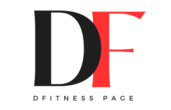How To Cut

What Is Cutting?
Losing body fat while keeping your muscle mass is known as “cutting.” Lowering body fat percentage and displaying a leaner, more defined physique are the objectives of cutting. Usually, calorie restriction, resistance training, and cardiovascular exercise are combined to achieve this. When you consume fewer calories than your body uses, your body must turn to its fat reserves for energy. This is known as a calorie deficit. While cutting, resistance training is crucial for preserving muscle mass. Cardiovascular exercise, such as running or cycling, is utilized to increase calorie burn and hasten the process of fat loss.
Common Mistakes That Are Made
- Restricting calories too aggressively: Reducing calorie intake too quickly or too much can lead to muscle loss, a decrease in energy levels, and an increase in hunger. This can make it difficult to stick to a cutting diet and achieve the desired results.
- Neglecting resistance training: Resistance training is important for maintaining muscle mass while cutting. Skipping resistance training or reducing the frequency or intensity can lead to muscle loss, which can ultimately affect the overall physique.
- Skipping meals: Skipping meals can lead to overeating later in the day and can also cause your metabolism to slow down, making it harder to lose body fat.
- Not getting enough protein: Eating enough protein is essential for maintaining muscle mass while cutting. Not consuming enough protein can lead to muscle loss, making it harder to achieve the desired physique.
- Not tracking progress: Not monitoring progress can make it difficult to know if the current approach is working and make necessary adjustments. Keeping track of body composition and measurements is important to evaluate progress and make changes as needed.
The Best Way To Cut
Here are several strategies that can be used to effectively cut and lose body fat while maintaining muscle mass.
- Caloric deficit: Creating a calorie deficit by consuming fewer calories than the body burns is the most important aspect of cutting. This forces the body to burn stored fat as an energy source.
- Resistance Training: Resistance training such as weightlifting or bodyweight exercises is important for maintaining muscle mass while cutting.
- Cardiovascular exercise: Cardio such as running, cycling or any other type of cardio helps to burn additional calories and speed up fat loss.
- Adequate Protein intake: Consuming enough protein is important for muscle repair and growth. The recommended daily intake of protein is around 1g of protein per pound of body weight.
- Adequate rest and recovery: Getting enough rest and allowing enough time for recovery is essential for muscle growth. Sleeping for at least 7-8 hours per night and allowing for at least 48 hours of rest between training the same muscle group.
- Monitoring Progress: Keeping track of weight, body composition, and measurements is crucial to know if the current approach is working and make adjustments if needed.
- Gradual approach : A slow and gradual approach to cutting is often better than a rapid one, as a slow approach allows for a more sustainable and long-term results.
- Proper nutrients: Keep in mind that cutting doesn’t mean cutting out all the essential nutrients the body needs, include nutrient-dense foods in the diet that provide the necessary vitamins and minerals while cutting down on empty calories.
It’s important to have a well-structured plan, including proper diet, training, and rest. It’s also necessary to keep in mind that cutting takes time and patience, consistency is crucial for success. Also, cutting should be done in a healthy and sustainable way and not in a rush.
QUESTIONS?
Feel free to ask us about anything. We will answer your questions or concerns as best as we can.
Fitness Products We Recommend

Weight Loss Products
All of the products you need to lose weight are found here for you.

Products to Help Grow Muscle
Wanna grow muscles? We found some products you could use.
